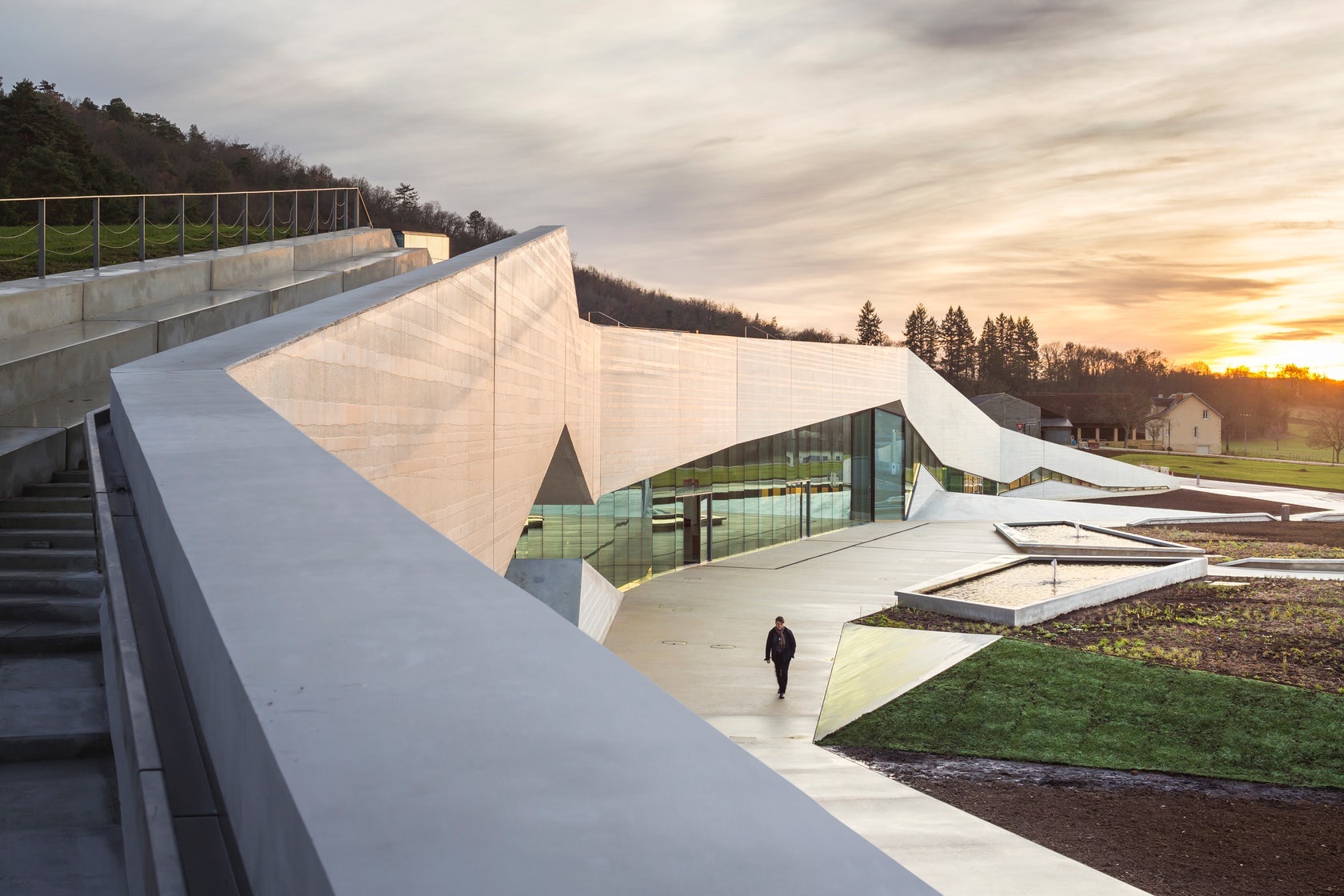Snøhetta has revealed new photographs of its recently completed cave museum in Montignac, France. Set on the famous UNESCO World Heritage Site of the Lascaux Caves, the new Lascaux IV International Centre for Cave Art features a huge replica of the site’s 20,000-year-old prehistoric cave paintings.

The project was designed in collaboration with SRA Architecture + Engineering, local firm Duncan Lewis Scape Architecture and exhibition designers Casson Mann. The holistic museum provides an educational experience into the history of the formerly open Lascaux Caves, which were discovered in 1940 but later closed due to overexposure and deterioration.
Known as the “Sistine Chapel of prehistory,” the Lascaux Caves, located in the Vézère Valley in Dordogne, are considered the cradle of prehistoric European civilization. The cave paintings that exist at the site are some of the world’s most renowned examples of Paleolithic art.

In an effort to reproduce the experience of physically touring the caves, the design team created facsimiles of the caves inside an 11,400-square-meter [122,700-square-feet] elongated structure that is fissured in the surrounding landscape. The exterior of the project evokes the earthy tones and raw materials found in the forested hillside and massive rock formations nearby.

The roof of Lascaux IV features a gentle broken line that echoes the hill’s undulating form. From the ground level, visitors must walk up the sloping staircase or take an elevator from the lobby that ascends to the low-lying roof to begin a tour of the facility.

The building is clad inside and out with the same architectural concrete, which features a raw, unfinished treatment designed to connect the building with the mineral world, hillside rocks and the cave itself. Strips of glass define the front façade and the roof, bringing daylight horizontally into the space and orienting visitors throughout the building.

From the roof, visitors slowly descend into the cave facsimile, which reveals a damp and dark atmosphere, recreating the humidity within the original caves. The quiet space muffles sounds and invites contemplation as lights flicker to unveil the rich layers of paintings and engravings on the walls.

The cave replica was developed through 3D laser scanning and casting technologies. Following construction, 25 artists spent two years hand-painting 900 meters [3,000 feet] of resin rock with reproductions of the original paintings. The artists used the same pigments used by the prehistoric painters to recreate almost 2,000 artworks.

The end of the cave facsimile opens up into a transition space that features a garden and patio allowing visitors to readjust to the exterior context.

The building also includes a series of diverse exhibition chambers called The Workshop. Visitors are given an interactive digital companion device (CdV) to guide them through these interactive exhibits. By excluding text panels, the scenography, designed by Casson Mann, focuses on eight hanging rock wall fragments that can be examined more closely and in great detail.

Visitors also have the chance to watch a 3D film in the Cinema that immerses them in the history of famous caves around the world. The Cave Art Theatre presents a three-act play using light, sound, movies and objects to tell the story of Lascaux’s cave art. In the Imagination Gallery, visitors explore the influence that prehistoric cave art has had on contemporary artists in an exhibition curated by professor, philosopher and author Jean-Paul Jouary.

Snøhetta’s Lascaux IV balances big contrasts between the varying atmospheres and intensities of experiences inside and outside of the cave replica. Its striking, jagged exterior, which blends seamlessly into the hillside, shapes the unique interior construction, allowing visitors to physically and mentally immerse themselves in the museum’s dramatic journey.

Images via Snøhetta




